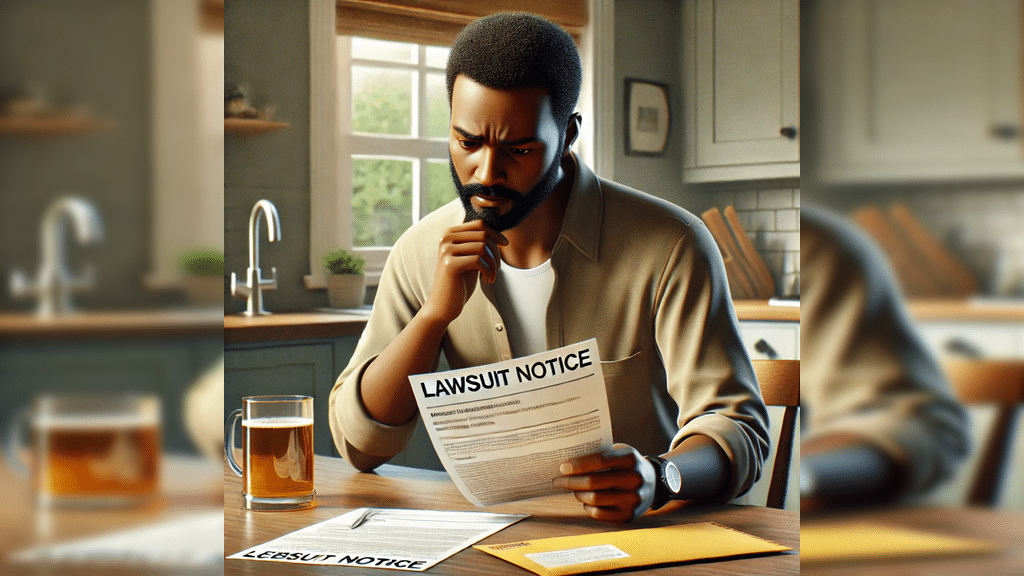Handling a Debt Collection Defense Pro Se

When 43-year-old Marcus Thompson opened a letter from a local law firm, his heart sank. He was being sued for a $9,200 credit card debt he didn’t even recognize. The law firm said he owed a company he’d never heard of. The debt had been sold several times, and the records were a mess. Marcus didn’t have a lawyer — but he had something just as powerful: Courtroom5.
With help from Courtroom5, Marcus represented himself in court — and got the case dismissed.
The Lawsuit
Marcus had been out of work for six months and just started a new job when the lawsuit arrived. It came from a debt buyer, a company that purchases old accounts from credit card companies for pennies on the dollar and then sues people to collect. Marcus didn’t know the company suing him, and he had no memory of the alleged account.
He was scared. The complaint said he had 30 days to respond or the court would give the debt buyer a default judgment. If that happened, they could garnish his wages or freeze his bank account.
A Google search led Marcus to Courtroom5, where he signed up for the Pro Se Litigator Plan.
Building His Defense with Courtroom5
Marcus used the 5-step AI-driven document assembly process — the Personal Practice of Law — to defend himself.
Step 1: Choosing the Procedure
He started with a motion to dismiss. Courtroom5 helped him determine that the complaint lacked key information — like a copy of the contract and a proper assignment of the debt.
Step 2: Reviewing the Rules
Courtroom5 showed him the state rules of civil procedure and explained what a valid complaint needed to include. Marcus learned that the plaintiff had to prove they owned the debt and that he was the right person to sue.
Step 3: Fact Pattern Analysis
Marcus used Courtroom5’s tools to clarify the facts:
- He didn’t recognize the account.
- The complaint had no contract or signed agreement.
- The debt buyer didn’t explain how they got the account.
These facts helped Marcus define a goal: to challenge the plaintiff’s standing and documentation.
Step 4: Legal Research
Courtroom5 suggested keywords like “debt buyer standing North Carolina” and “motion to dismiss insufficient pleading.” Marcus found cases where courts dismissed similar lawsuits due to poor documentation. Courtroom5 summarized the cases in plain English so he could include them in his motion.
Step 5: Document Generation
At the click of a button, Courtroom5 generated a professional motion to dismiss and instructions for filing and serving it. Marcus filed on time and served the plaintiff.
Winning the Motion
The judge denied the motion to dismiss — but only because the court wanted more information. Courtroom5 helped Marcus file an answer and affirmative defenses, including:
- Lack of standing
- Failure to state a claim
- Expired statute of limitations
He also served discovery requests, asking the plaintiff to produce:
- A signed contract
- A full account history
- Proof they owned the debt
Discovery Revealed the Truth
Courtroom5 helped Marcus analyze the discovery responses. The plaintiff produced a few billing statements — but no signed agreement, and no proof of assignment. Courtroom5 flagged this as a major weakness in the case.
Marcus updated his fact pattern analysis and chose the next procedure: motion for summary judgment.
Filing His Own Motion
Courtroom5 helped Marcus draft a motion for summary judgment asking the court to dismiss the case before trial. His brief showed:
- The plaintiff failed to produce key documents.
- There was no way to verify the debt was his.
- North Carolina law required proper documentation.
He filed the motion and attended the hearing. With confidence and clarity, Marcus explained that the plaintiff hadn’t met its burden of proof.
Case Dismissed
The judge agreed. The case was dismissed with prejudice, meaning they couldn’t sue Marcus again for that debt.
Why the Personal Practice of Law Works
Marcus didn’t know anything about civil litigation when he started. But with Courtroom5, he learned to:
- Understand court rules
- Analyze the facts of his case
- Research the law
- Assemble strong legal documents
- Make good decisions at every step
The Personal Practice of Law turned him from a scared defendant into a confident advocate.
You Can Do It Too
If you’ve been sued and can’t afford a lawyer, don’t give up. You don’t need to face court alone. Courtroom5 gives you the tools to fight back and win, even against professional debt collectors.
Start your Personal Practice of Law today. Justice is possible — even when you’re on your own.
